- Title: Contemplations, The Peace Symbol and the Rainbow Flag.
- Author: Arvindus.
- Publisher: Arvindus.
- Copyright: Arvindus, 2023, all rights reserved.
- Index: 202311291.
- Edition: html, first edition.
Introduction
In this contemplation the so called 'peace sign' and 'rainbow flag' shall be explored. These symbols have been widely adopted by a large variety of institutions and movements, but here and there they also find resistance from opposing movements. Here their form and usage shall be studied from a more esoteric perspective.
The Peace Symbol
In 1958 Gerald Holtom (1914-1985) presented a symbol to people of the Campaign for Nuclear Disarmament (CND). The symbol was adopted and became widely in use as a general peace symbol.1 Below is shown the original design and its later, simplified adoption.
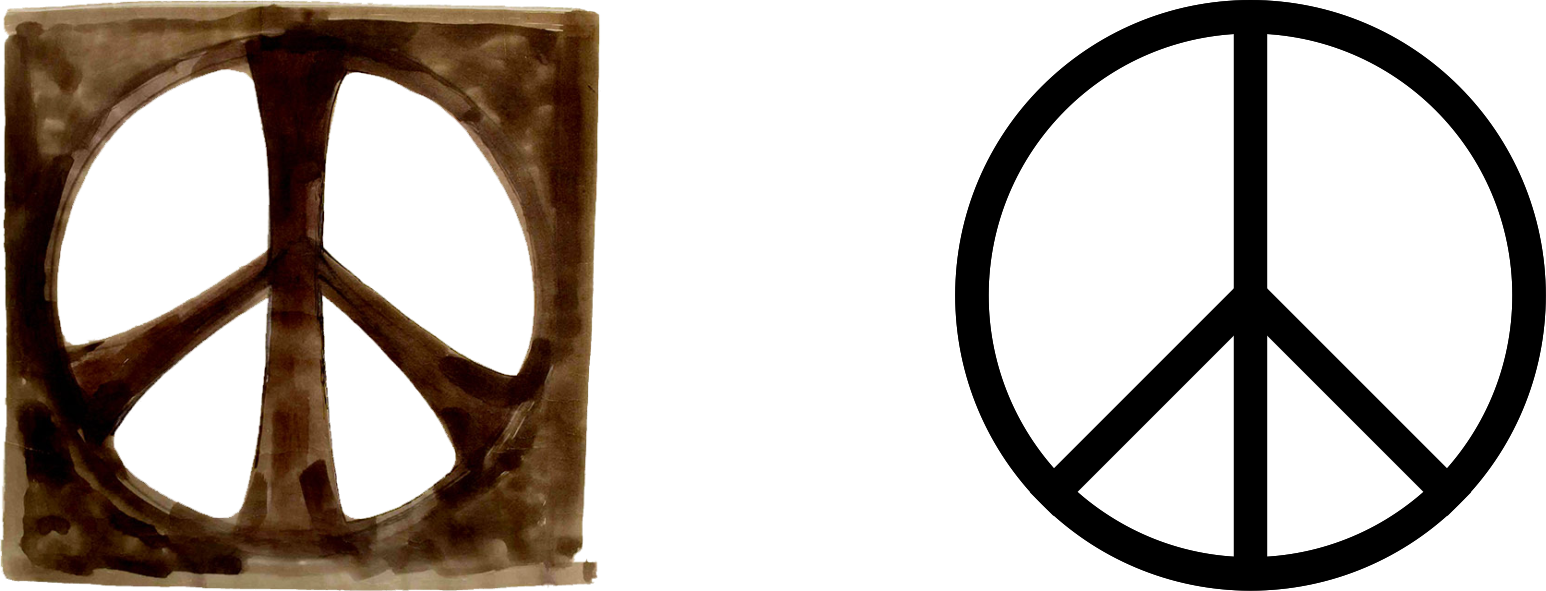
Figure 1: The original and the general Holtom symbol.
According to Holtom himself the symbol was made up of the semaphore flag signals for 'n' and 'd', standing for 'nuclear disarmament'.2
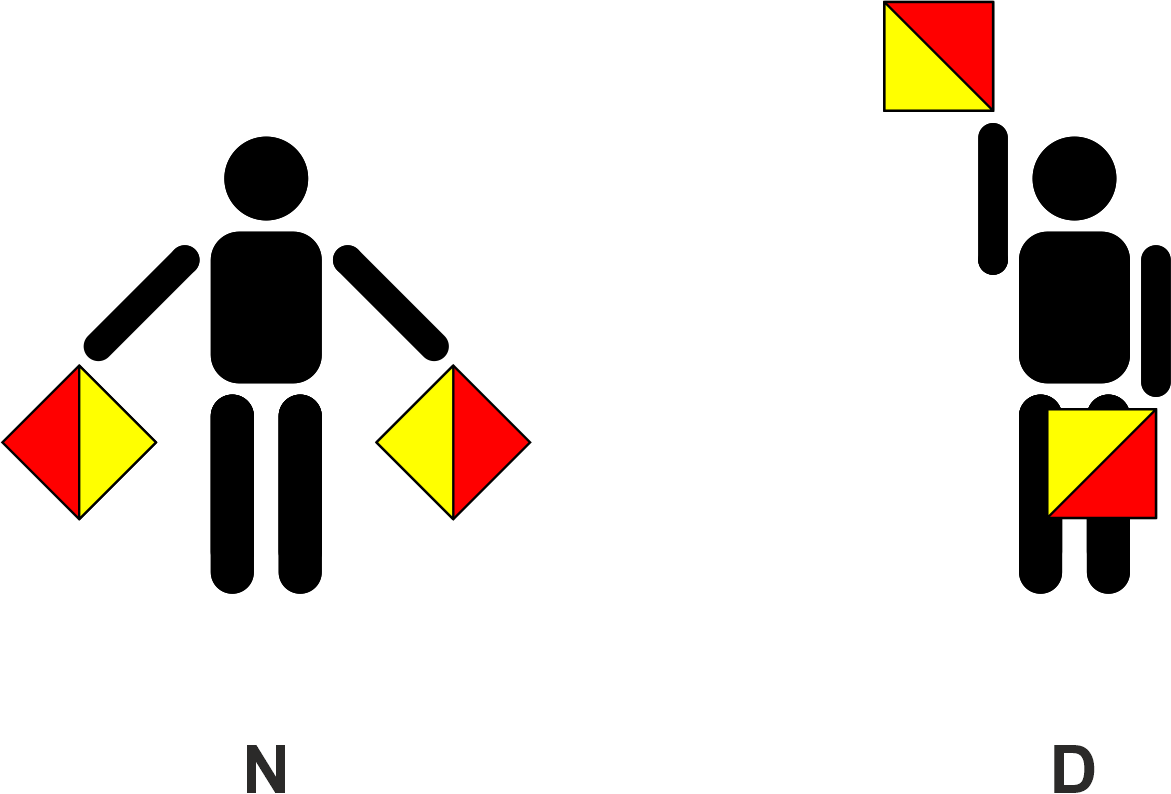
Figure 2: The semaphoric signs of the Holtom symbol.
Holtom also indicated that the symbol represented a man in despair with his arms stretched downwards, such as for instance depicted in Sad Forebodings of What is to Come in the Disasters of War series of Francisco Goya (1746-1828). Holtom himself mentioned however The Third of May 1808 of the same artist as his source of inspiration, but the man in that painting has his arms turned upwards instead of downwards and does not perfectly fit Holtom's own description.3
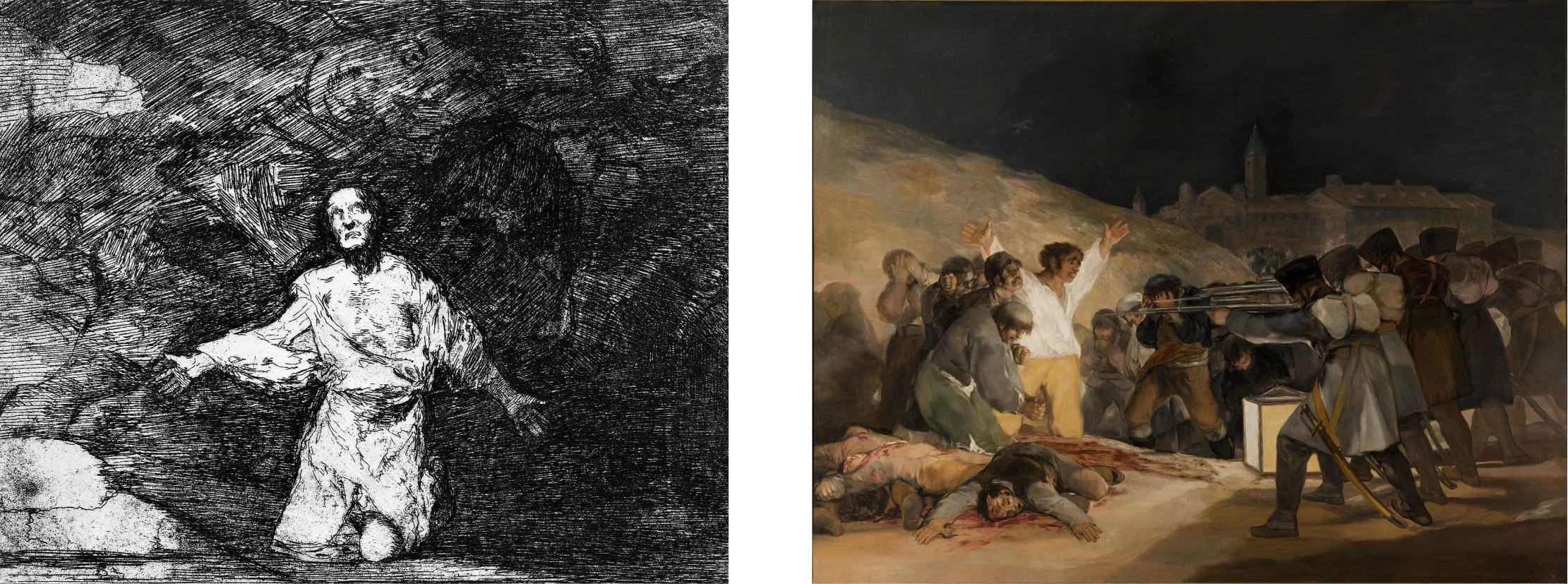
Figure 3: Francisco Goya, Sad Forebodings of What is to Come, in: Disasters of War and The Third of May 1808.
Holtom also explained at his presentation that the straight lines would symbolize the death of a man and the circle an unborn child, a symbology that was probably taken from Rudolph Koch's The Book of Signs.4, 5
For using this symbol of 'the death of a man' the adoption of Holtom's symbol as peace symbol has been criticized, because in order to symbolize peace it had to be horizontally mirrored so it could symbolize the life of a man, so was the consideration.6

Figure 4: The true peace symbol.
This thought connects to the runes of 'mannar' and 'algir' (or 'yr'), to which German ariosophists and Nazi's attached the meanings of 'life' and 'death'.7, 8, 9, 10, 11
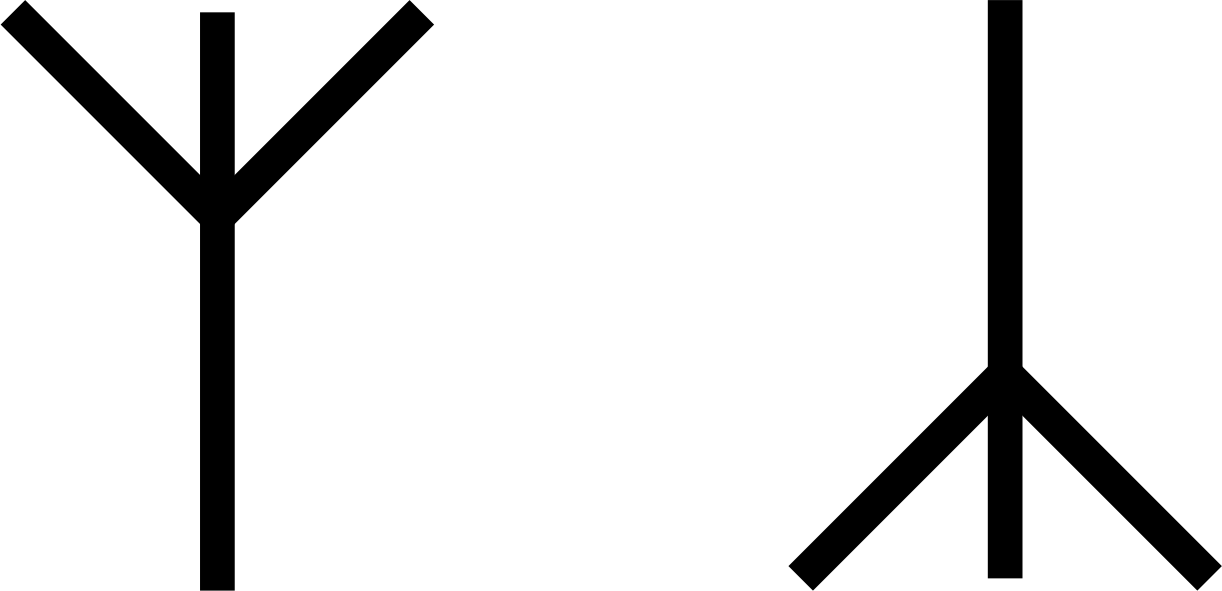
Figure 5: The mannar and algir rune.
Some further recognized in Holtom's symbol also the cross of the antichrist, calling the symbol thus 'satanic'.12, 13
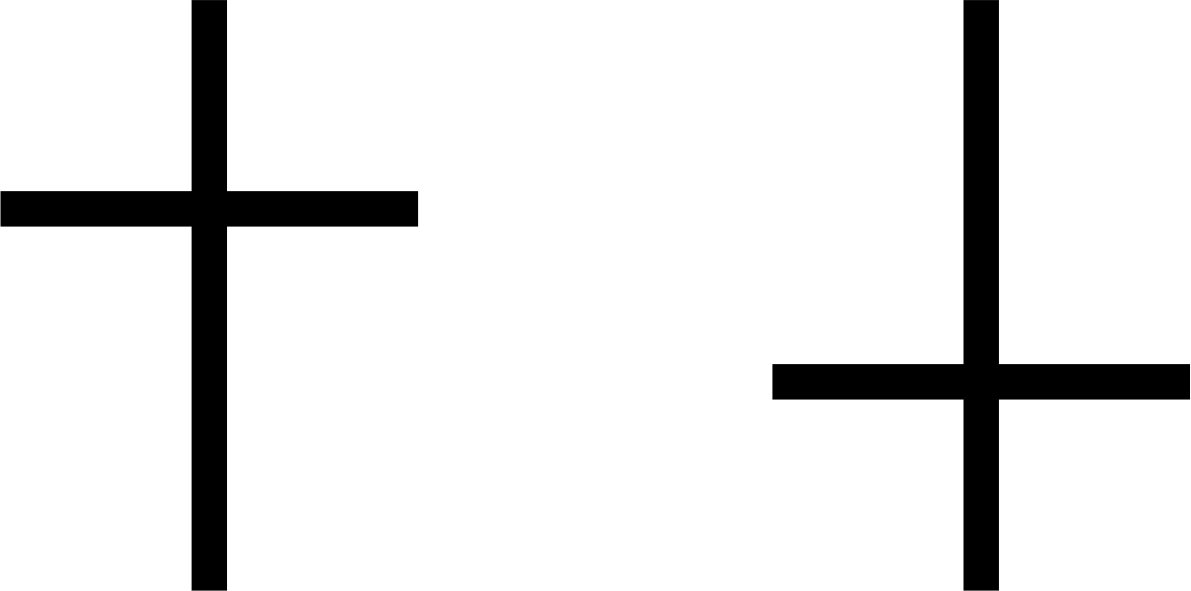
Figure 6: The Christ and the antichrist cross.
And Holtom's symbol is of course also reminiscent of an upside down Greek 'psi' symbol. This symbol was contemplated in ''Ψ'' where it was found that the psi symbol, indeed, represents the Christ.14 And an anti-psi symbol may along this line of thought then indeed be considered as representing the antichrist.
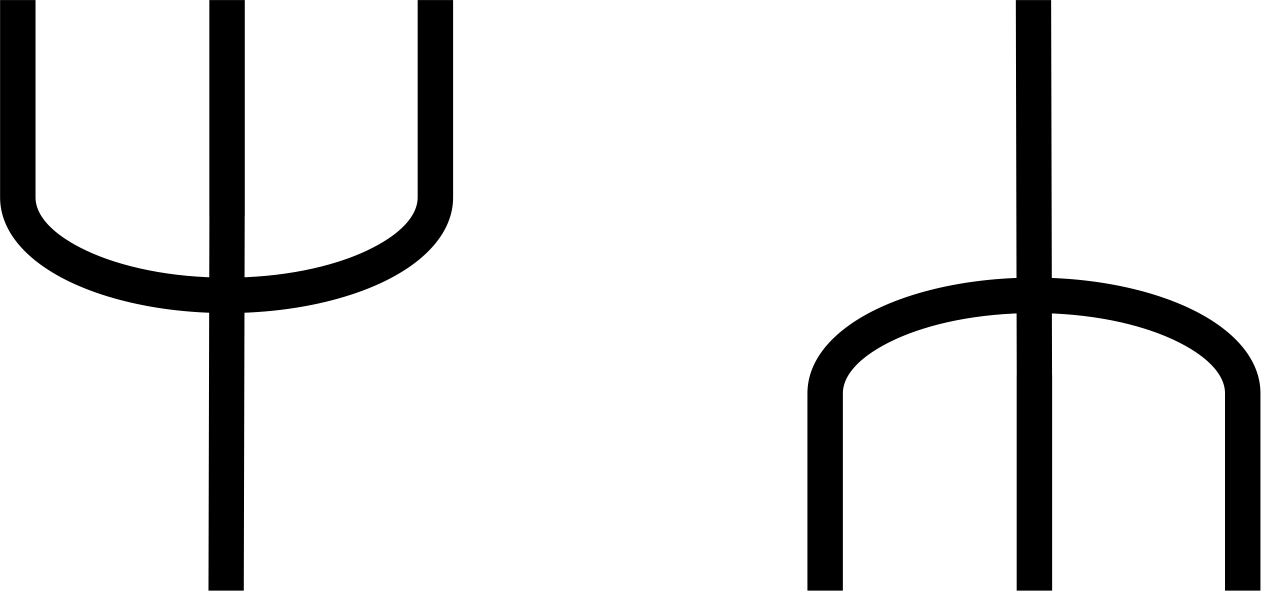
Figure 7: The psi and the anti-psi symbol.
These recognitions connect to what has been contemplated previously in 'The Christ and the Antichrist'. For there it was shown how a cross within a periphery with its emphasis below symbolizes the antichrist principle with its orientation on matter and how a cross within a periphery with its emphasis above symbolizes the Christ principle with its orientation on spirit (for in a figuration the top represents spirit and the bottom matter).15
The possible objection that the general Holtom symbol contains a Saint Nino cross16 or that the original Holtom symbol regards a templars cross is not valid because in contrary to the Holtom cross neither of those two crosses has its emphasis in the lower part of the symbol, and this is an essential matter. We see the two aforementioned crosses depicted below.
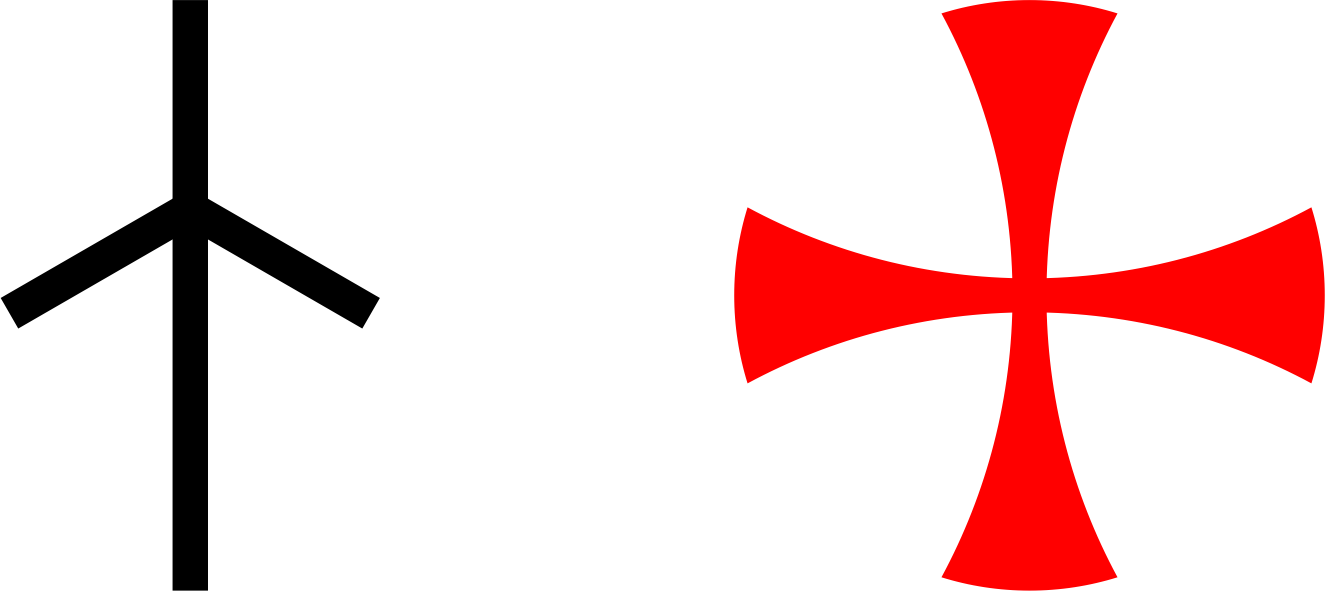
Figure 8: The Saint Nino and the templars cross.
Does this then make Holtom and the CND satanic? To answer this question it should first be made clear that everything with an orientation on matter instead of spirit can be understood as 'satanic'. And in this sense most of us are still satanic in one aspect or the other, for who is radically free from all material orientations?17
And then it must be understood that lofty ideals can be symbolized by unlofty symbols, like unlofty ideals can be symbolized by lofty symbols. Here we may think for instance of the Nazistic usage of the swastika and the zionist usage of the six pointed star.
And further it must be kept in mind that formulations of lofty ideals can be abused by unlofty organisations. Most evil on this planet is for instance enacted under the pretence of lofty necessity.
So with regards to Holtom and the CND we have the ideal, the organisation (and the designer) and the symbol to analyse. The symbol we already analysed, and we came to the conclusion that it was materialistic, therewith satanic, and therewith unlofty.
Holtom himself was however a Christian and a pacifist,18 and his initial design was in fact an equal-armed cross. He dropped this cross however due to its affiliation with Christianity as a religion,19 and instead he designed the symbol under consideration. From this information Holtom may likely be considered as a well-meaning man who got deluded into trading a Christian cross for a satanic cross.
The CND as organisation came to being in 1958 through the relativistic philosopher Bertrand Russell (1872-1970) and the priest Lewis John Collins (1905-1982).20 And with the latter as chairman it is also hard to see the CND as purposely satanic.
Now this CND, this Campaign for Nuclear Disarmament, and later wider peace movements, thus adopted the so called 'peace symbol' of Holtom. However it must be mentioned here that peace is more, much more, than simply the abolishment of weaponry. Peace, true peace, is a gift of God to be accepted by man.21 True peace is man's expression of his divinity.22 So what Holtom's symbol can be said to symbolize with its emphasis on the material side of the symbol is the aim of the CND and further peace movements to accomplish peace through materialistic, relativistic means. And that approach can in a way (in the earlier described way) indeed be considered as satanic.
But Satan is called 'the prince of darkness' while Christ is called 'the prince of peace',23, 24 and the latter said that he had not come to bring peace but a sword25. With this Christ of course did not mean to say that he came to bring a physical weapon for men to wage war against each other; the sword he came to bring was that of discernment between spirit and matter, between good and evil, being the sword of spirit itself.26, 27, 28 This is a different sword than that which the antichrist offers, which is the sword of matter.
Now a sword consists of a friendly side, the hilt, and an inimical side, the blade, whereby these two are separated by a crossing guard.29 And the enemy of the Christ is of course the antichrist. Thus the Christ sword of spirit, of discrimination, is turned with its blade downwards, towards matter. And the enemy of the antichrist is the Christ, and thus the antichrist sword of matter, of separation,30 is turned with its blade upwards, towards spirit. These two swords then again form the crosses of the Christ and the antichrist. And Holtom's symbol then obviously resembles the sword of the antichrist with its blade turned upwards. Below we see the swords of the the Christ and the antichrist depicted.
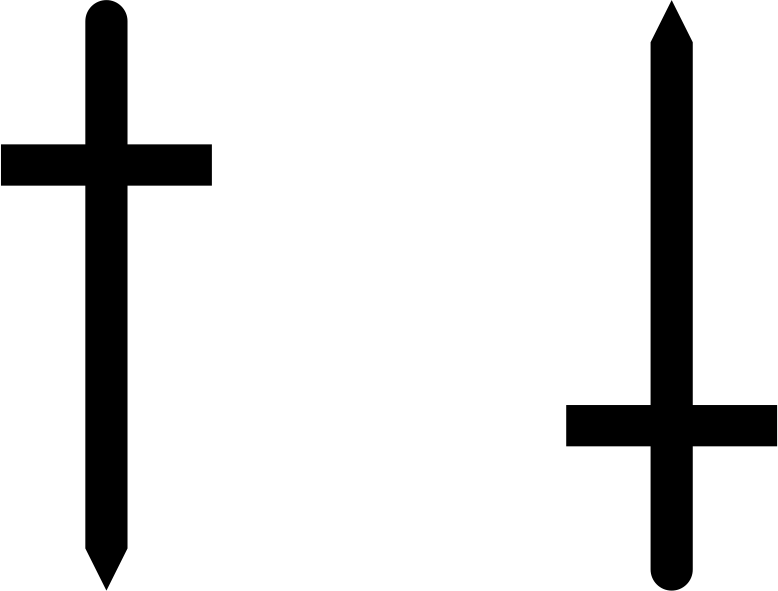
Figure 9: The Christ and the antichrist sword.
Then to conclude this paragraph the following can be summarized. Holtom, the CND and wider peace movements should most likely not be considered as purposely satanic. The Holtom symbol itself however is satanic. And as such it may symbolize the aim of Holtom, the CND and wider peace movements to achieve peace through material instead of spiritual means.
The Rainbow Flag
In 1978 Gilbert Baker (1951-2017) designed a flag with stripes of different colours as a symbol of gay pride.31 Initially the flag had eight colours, but due to practical reasons it was soon changed into the now well-known six coloured 'rainbow flag', as it is often called. The colours from the top to the bottom regard red, orange, yellow, green, blue and violet and they were expressed to symbolize life, healing, the sun, nature, harmony and spirit.32 Later other variations were adopted to symbolize expansive forms of inclusion, however since these variations are all based upon the Baker flag only the latter shall be treated here. We see this Baker flag depicted below.

Figure 10: The Baker flag.
What may catch the eye about the Baker or 'rainbow' flag is that it contains only six colours, and not the usually considered seven (Newtonian) colours of the rainbow (being violet, indigo, blue, green, yellow, orange and red)33. And seven was previously contemplated to be the number of perfection and the Christ, and six that of imperfection and the antichrist.34
To be noted is also that the visible colour with the highest frequency (and shortest wave length), violet, is put at the bottom, while the one with the lowest frequency (and longest wave length), red, is put at the top.35 But spirit is matter in a higher frequency, like matter is spirit in a lower frequency,36, 37 and thus violet (as also white) is more related to spirit, and red (as also black) more to matter38. And since the top of a symbol symbolizes spirit and the bottom matter it would be proper to put violet at the top and red at the bottom. Baker however put the proper colour sequence upside down, just like Holtom had put the cross of Christ upside down. A proper arrangement is shown below.

Figure 11: The true rainbow flag.
Some may object that in a real rainbow red is clearly seen on top and violet below. However such a rainbow does not follow a straight symbolical line like a flag. A rainbow is formed as a circle around a light source, and the red therein is lying against a dark or black periphery and the violet against a light or white centre. Thus we get the picture of a white centre, a black periphery and a mediating rainbow being constituted of seven colours.
Basically with a rainbow a point within a periphery or circle is formed, and in symbolism such a point represents spirit and such a periphery matter.39 When depicted purely geometrically in one foreground colour against one background colour, such as black against white, the point in the circle is mediated by a cross, whereby that cross symbolizes consciousness, and on the upward arc the Christ principle.40 However when the whole spectrum of colours from white to black is used then a sevenfold rainbow may serve a similar purpose as the cross by connecting a, in this case white, point with a, in this case black, periphery. So a rainbow may be taken as a symbol of consciousness, and also of the Christ principle. Both mentioned symbols are depicted below.

Figure 12: The cross and the rainbow as mediating the point and the circle.
Now when spirit with its symbol of the point and matter with its symbol of the circle are symbolized on a vertical line then the top of the figure symbolizes the first and the bottom the latter. And this is what Baker has reversed. Instead of creating a sevenfold rainbow of Christ he created a sixfold 'rainbow' of the antichrist.
So, we ask again, does the above observed make Baker and gay pride satanic? And again we are considering the ideal, the organisation (and the designer) and the symbol.
The widest ideal for which the Baker flag in different modifications is used regards inclusion of the so called 'socially marginalized'. Now 'inclusion' sounds of course as a lofty ideal, however also here it goes that true inclusion comes from the metaphysical world, from the soul.41, 42 And parading one's pride of one's own sexual condition, in for instance gay pride parades, may perhaps be personally satisfactory but cannot be considered as lofty.43, 44
With this Baker and pride and inclusion movements are not posited as purposely satanic. Their aims, like those of Holtom and the CND, may likely be considered as well-meant deceptions. But the antichrist is known as 'the deceiver of the whole world' and his principle regards the pull of matter,45, 46 and as far as Baker and the pride and inclusion movements are deceived they are, just like any of us when being mislead, under the sway of satanism. And this deception then may be considered to be symbolized by their six coloured upside down 'rainbow flag'.
Conclusion
Above the Holtom 'peace' sign, used by the CND and peace movements, and the Baker 'rainbow' flag, used by gay pride and inclusion movements, were contemplated. It was found that although the designers and the movements should likely not be considered as purposely satanic they are however satanically, in the sense of materialistically, deceived by ignoring that true peace and true inclusion come from the metaphysical levels of God and soul. And this deception then may be taken to be symbolized by their, indeed, satanic symbols.
May we then ourselves stay clear of such materialistic deceptions.
Notes
- Barry Miles, Peace: 50 Years of Protest, Collins & Brown, London, 2008, p. 8, 73.
- Ibidem, p. 77.
- Gerald Holtom, in: Ibidem, p. 80. "I drew myself: the representative of an individual in despair, with hands palm outstretched outward and downward in the manner of Goya's peasant before the firing squad in his painting, The Third of May 1808."
- Peace: 50 Years of Protest, p. 78.
- Rudolph Koch, Vyvian Holland (translator), The Book of Signs, Dover Publications inc., New York, 1955, p. 10-11.
- Peace: 50 Years of Protest, p. 68.
- Ibidem, p. 68-69.
- Ralph W. V. Elliott, Runes, An Introduction, Manchester University Press, Manchester, 1971, p. 48-49.
- Guido von List, Das Geheimnis der Runen, Mit einer Runentafel, Paul Zilmann, Groß-Lichterfelde, 1907, p. 17-19.
- Robin Lumsden, The Black Corps, A Collector's Guide to the History and Regalia of the SS, Hippocrene Books Inc., New York, 1992, p. 100-101.
- Stephen E. Flowers / Michael Moynihan, The Secret King, The Myth and Reality of Nazi Occultism, Feral House / Dominion, Los Angeles / Waterbury Center, 2007, p. 92-93.
- Peace: 50 Years of Protest, p. 118-119.
- Mike Warnke, The Satan Seller, Logos International, New Jersey, 1972, p. 188-189.
- 'Contemplations, 'Ψ'', Index: 202104131.
- 'Contemplations, The Christ and the Antichrist', Index: 202311081.
- Nota 6.
- 'Questions, How Can the Concepts of Black and White Magic Be Understood?', Index: 202304301.
- Peace: 50 Years of Protest, p. 66.
- Ibidem, p. 80.
- Ibidem, p. 12, 60.
- Geert Crevits, Morya Wijsheid 3, God woont in je hart, Mayil Publishing House, 2010, p. 144-145, translated. "The world is at the moment such that it wants peace, but that it does not know in which manner it can reach it. And it cannot find peace unless it accepts the peace that comes out of God. Man does not want that, for he wants to accomplish peace: with peace conferences, with peace actions, with whatever of peace. Accepting the divine peace in his heart, that he does not dare. And still this is the way of peace - that man would accept the peace that is there; the peace that comes from God."
- Alice A. Bailey, Problems of Humanity, in: Twenty-Four Books of Esoteric Philosophy, (CD-ROM, Release 3), Lucis Trust, London / New York, 2001, p. 169. "Spirituality is essentially the establishing of right human relations, the promotion of goodwill and finally the establishing of a true peace on earth, as the result of these two expressions of divinity."
- Helena P. Blavatsky, Isis Unveiled, Volume I, in: Theosophical Classics, (CD-ROM), Theosophical Publishing House, Manilla, 2002, indic. p. 157. "The snake, which plays such a prominent part in the imagery of the ancients, was degraded by the absurd interpretation of the serpent of the Book of Genesis into a synonym of Satan, the Prince of Darkness, whereas it is the most ingenious of all the myths in its various symbolisms."
- The American Standard Old Testament, (software), Version 1.0, Ages Software, Albany, 1996, Isaiah, Ch. 9, v. 6. "For unto us a child is born, unto us a son is given; and the government shall be upon his shoulder: and his name shall be called Wonderful, Counsellor, Mighty God, Everlasting Father, Prince of Peace."
- The American Standard New Testament, (software), Version 1.0, Ages Software, Albany, 1996, Matthew, Ch. 10, v. 34. "Think not that I came to send peace on the earth: I came not to send peace, but a sword."
- Ibidem, 2 Corinthians, Ch. 10, v. 3-6.
- Alice A. Bailey, The Reappearance of the Christ, in:Twenty-Four Books of Esoteric Philosophy, (CD-ROM, Release 3), Lucis Trust, London / New York, 2001, p. 111. "The sword which He wields is the sword of the Spirit; it is that sword which produces cleavage between a true spirituality and an habitual materialism."
- Alice A. Bailey, The Externalisation of the Hierarchy, in:Twenty-Four Books of Esoteric Philosophy, (CD-ROM, Release 3), Lucis Trust, London / New York, 2001, p. 434. "The sword of the spirit is wielded by the Hierarchy, and by its means cosmic evil is arrested; the sword of discrimination is wielded by the initiates and the disciples of the world, and by its means the distinction between good and evil, with a consequent presentation of free choice between the two, has been laid before humanity, and the lines of demarcation have been made abundantly clear in this world war. It had been the hope of the Christ and the longing of all the Masters that men would see clearly and make free and right choice, so that—without physical plane warfare—they would bring about the needed changes and the ending of wrong conditions. But the conflict descended on to the physical plane and the sword of material war (symbolically speaking) was taken up by humanity."
- Encyclopædia Britannica, Ultimate Reference Suite, Version 2015, (software), Encyclopædia Britannica, 2015, sword.
- Alice A. Bailey, Esoteric Psychology, Volume II, A Treatise on the Seven Rays, Volume II, in: Twenty-Four Books of Esoteric Philosophy, (CD-ROM, Release 3), Lucis Trust, London / New York, 2001, p. 236. "We have been taught much anent the great heresy of separativeness; […]."
- Encyclopædia Britannica, Gay Pride.
- Ibidem.
- Encyclopædia Britannica, rainbow.
- 'The Christ and the Antichrist', 666 and 777.
- Encyclopædia Britannica, rainbow, The visible spectrum.
- Helena P. Blavatsky, The Secret Doctrine, Volume I, in: Theosophical Classics, (CD-ROM), Theosophical Publishing House, Manilla, 2002, indic. p. 633. "Spirit is matter on the seventh plane; matter is Spirit—on the lowest point of its cyclic activity; and both—are MAYA."
- Benjamin Creme, Maitreya's Mission, Volume Two, Share International, Foundation, London, p. 657. "Briefly, the personality is the reflection of the soul on the physical plane. The vehicles – physical, astral, and mental – are the equipment of the personality which the soul uses to experience its becoming in time and space. The purpose of the personality is to provide a vehicle for the soul to do that, because the soul cannot live at this level at its own vibration. The soul is on the causal level, vibrating at a very high frequency. Its nature is fire."
- Ambika Wauters, The Book of Chakras, Barron's Educational Series, Inc., New York, 2002, p. 11.
- 'Contemplations, The Cross in the Circle: Consciousness and Duality', Index: 201510131.
- 'The Christ and the Antichrist', Crosses.
- Alice A. Bailey, Telepathy and the Etheric Vehicle, in: Twenty-Four Books of Esoteric Philosophy, (CD-ROM, Release 3), Lucis Trust, London / New York, 2001, p. 35. "In these three ways the vehicle of the personality can be so conditioned that it can become a sensitive receiving apparatus. When, however, soul-consciousness is achieved or developing, then this triple instrument is superseded by the intuitional receptivity of the soul—whose inclusiveness is absolute and who is at-one with the soul in all forms."
- Alice A. Bailey, Esoteric Psychology, Volume II, p. 556-557. "The major idea which I would have you bear in mind is the development of Inclusiveness. This inclusiveness is the outstanding characteristic of the soul, or self, whether it is the soul of man, the sensitive nature of the cosmic Christ, or the anima mundi, the soul of the world. This inclusiveness tends to synthesis."
- Alice A. Bailey, Esoteric Astrology, A Treatise on the Seven Rays, Volume III, in: Twenty-Four Books of Esoteric Philosophy, (CD-ROM), Lucis Trust, London / New York, 2001, p. 206. "1. Pride—which is intellectual satisfaction, making the mind the barrier to soul control."
- Alice A. Bailey, Esoteric Psychology, Volume II, p. 108. "3. Relinquish the pride of mind which sees its way and its interpretations to be correct and true, and others false and wrong. This is the way of separation. Adhere to the way of integration which is of the soul and not of the mind."
- The American Standard New Testament, Revelation, Ch. 12, v. 9. "And the great dragon was cast down, the old serpent, he that is called the Devil and Satan, the deceiver of the whole world; […]."
- Nota 15.
Bibliography
- 'Contemplations, The Christ and the Antichrist', Index: 202311081.
- 'Contemplations, The Cross in the Circle: Consciousness and Duality', Index: 201510131.
- 'Contemplations, 'Ψ'', Index: 202104131.
- 'Questions, How Can the Concepts of Black and White Magic Be Understood?', Index: 202304301.
- Alice A. Bailey, Esoteric Astrology, A Treatise on the Seven Rays, Volume III, in: Twenty-Four Books of Esoteric Philosophy, (CD-ROM), Lucis Trust, London / New York, 2001.
- Alice A. Bailey, Esoteric Psychology, Volume II, A Treatise on the Seven Rays, Volume II, in: Twenty-Four Books of Esoteric Philosophy, (CD-ROM, Release 3), Lucis Trust, London / New York, 2001.
- Alice A. Bailey, Problems of Humanity, in: Twenty-Four Books of Esoteric Philosophy, (CD-ROM, Release 3), Lucis Trust, London / New York, 2001.
- Alice A. Bailey, Telepathy and the Etheric Vehicle, in: Twenty-Four Books of Esoteric Philosophy, (CD-ROM, Release 3), Lucis Trust, London / New York, 2001.
- Alice A. Bailey, The Externalisation of the Hierarchy, in:Twenty-Four Books of Esoteric Philosophy, (CD-ROM, Release 3), Lucis Trust, London / New York, 2001.
- Alice A. Bailey, The Reappearance of the Christ, in:Twenty-Four Books of Esoteric Philosophy, (CD-ROM, Release 3), Lucis Trust, London / New York, 2001.
- Helena P. Blavatsky, Isis Unveiled, Volume I, in: Theosophical Classics, (CD-ROM), Theosophical Publishing House, Manilla, 2002.
- Helena P. Blavatsky, The Secret Doctrine, Volume I, in: Theosophical Classics, (CD-ROM), Theosophical Publishing House, Manilla, 2002.
- Benjamin Creme, Maitreya's Mission, Volume Two, Share International, Foundation, London.
- Geert Crevits, Morya Wijsheid 3, God woont in je hart, Mayil Publishing House, 2010.
- Ralph W. V. Elliott, Runes, An Introduction, Manchester University Press, Manchester, 1971.
- Stephen E. Flowers / Michael Moynihan, The Secret King, The Myth and Reality of Nazi Occultism, Feral House / Dominion, Los Angeles / Waterbury Center, 2007.
- Rudolph Koch, Vyvian Holland (translator), The Book of Signs, Dover Publications inc., New York, 1955.
- Guido von List, Das Geheimnis der Runen, Mit einer Runentafel, Paul Zilmann, Groß-Lichterfelde, 1907.
- Robin Lumsden, The Black Corps, A Collector's Guide to the History and Regalia of the SS, Hippocrene Books Inc., New York, 1992.
- Barry Miles, Peace: 50 Years of Protest, Collins & Brown, London, 2008.
- Mike Warnke, The Satan Seller, Logos International, New Jersey, 1972.
- Ambika Wauters, The Book of Chakras, Barron's Educational Series, Inc., New York, 2002.
- Encyclopædia Britannica, Ultimate Reference Suite, Version 2015, (software), Encyclopædia Britannica, 2015.
- The American Standard New Testament, (software), Version 1.0, Ages Software, Albany, 1996.
- The American Standard Old Testament, (software), Version 1.0, Ages Software, Albany, 1996.